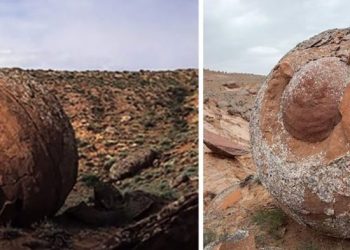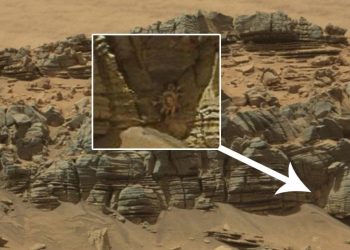In 1925, Emile Baraize, a French engineer, embarked on an ambitious excavation in Egypt. His conviction that more lay hidden beneath the sands of the Giza Plateau led to a remarkable discovery. After 11 years, Baraize revealed the Great Sphinx in its full glory, unearthing its massive lion’s body, the largest monolithic sculpture on Earth. This momentous finding reignited interest in the Sphinx’s origins and its role in ancient Egyptian history.
The Enigmatic Guardian of Giza: Architecture and Mystery
The Sphinx, an iconic figure with a human head atop a lion’s body, has captivated human imagination for centuries. Standing majestically at over 60 feet in height and extending about 240 feet in length, this monumental limestone sculpture is a testament to ancient Egyptian artistry and engineering. Carved from a single piece of bedrock, the Sphinx is an awe-inspiring architectural marvel. It faces eastward, greeting the rising sun each day, a symbolic gesture that many believe is linked to ancient Egyptian solar worship. The positioning of the Sphinx, with its stoic gaze overlooking the Giza pyramids, suggests a guardian-like role, protecting the sacred burial grounds of the pharaohs. Yet, despite its grandeur, the Sphinx remains an enigma, primarily due to the lack of any inscriptions on it. This absence has fueled endless speculation about its origin, age, and the purpose it served in ancient Egyptian society.
Adding to its mystique is the Dream Stele, erected by Pharaoh Thutmose IV and placed between the Sphinx’s massive paws. This historical artifact provides a unique insight into the monument’s significance in ancient Egyptian culture. According to the stele, Thutmose IV, while still a prince, had a profound dream during a hunting expedition in the Giza plateau. In this dream, the Sphinx, then almost completely buried in sand, appeared to him as a deity and promised him the throne of Egypt if he would undertake the task of excavating and restoring it. This narrative not only reveals the Sphinx’s spiritual and divine stature in the eyes of the Egyptians but also illustrates its perceived power to bestow kingship. The fact that Thutmose IV went on to become pharaoh after fulfilling the Sphinx’s request in his dream further cements the belief in its divine authority and its deep-rooted connection to the legitimacy and divine right of the Egyptian rulers. The Dream Stele thus stands as a vital clue, shedding light on the Sphinx’s role in the intertwining of politics, religion, and mythology in ancient Egyptian civilization.
Here Are 10 Extremely Old Images of the Sphinx You’ve Probably Never Seen
Akhenaten’s Link: The Sphinx and Celestial Worship
The lineage of Thutmose IV, leading to his grandson Akhenaten, adds another layer to the Sphinx’s lore. Akhenaten, known for his monotheistic worship of the Aten, a disk depicted in the sky, may have been influenced by the same celestial forces associated with the Sphinx. This connection between the Sphinx and sky worship fuels theories about its role in guiding Egyptian civilization, possibly, as some would suggest, even extraterrestrial influences.
Some theorists propose that the Sphinx’s origins date back to a time far outside what conventional Egyptology suggests. The phrase “I have been here since the first time” on the Dream Stele is often cited as evidence of the Sphinx’s ancientness, possibly predating conventional Egyptian chronology. These theories, while speculative, challenge traditional views and open up intriguing possibilities about the Sphinx’s true age and the origins of Egyptian civilization.
The Great Sphinx of Giza, an ancient marvel shrouded in enigma, stands as a sentinel of time, silently observing the unfolding of millennia. This majestic structure, with its enigmatic expression and imposing stature, has long been the subject of fascination and awe. Its mysterious gaze, fixed eternally on the horizon, seems to transcend time, offering a silent commentary on the past, present, and future of human civilization. The Sphinx’s unique blend of human intellect and animal strength captures the essence of Egyptian symbolism, where such combinations were often used to represent the divine power and wisdom.
The Sphinx’s spiritual significance is palpable. It is not merely a stone structure but a symbol of the cosmic balance and harmony revered in ancient Egyptian philosophy. Its alignment with the rising sun during the equinoxes and its proximity to the Pyramids of Giza create a cosmic tableau that many believe is aligned with celestial bodies and events. This alignment hints at the ancient Egyptians’ sophisticated understanding of astronomy and their belief in the connection between the heavens and the earthly realm.











